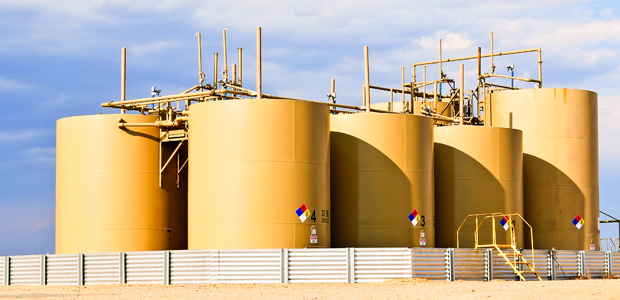
Commenters Raise Questions About EPA’s Methane, VOC Proposal
By Gary Steinbauer
The U.S. Environmental Protection Agency’s highly anticipated November 2021 Clean Air Act proposal regulating methane and volatile organic compound emissions from the oil and gas sector has drawn a reported 400,000 individual comment submissions. EPA seeks to use the methane proposal to expand VOC and methane emissions regulations that apply to new, modified and reconstructed sources within the crude oil and natural gas production sector, which the agency promulgated in 2012 and 2016. In addition, the methane proposal includes the first nationwide methane emissions guidelines for existing oil and gas sector sources.
It is no surprise EPA’s proposal has received a significant number of comments, especially considering the agency’s relatively brief and tumultuous history of regulating oil and gas methane emissions under the CAA. Feedback on the proposal differs considerably. Many commenters, primarily those representing the oil and gas industry and certain states, have raised serious legal concerns and question the proposal’s technical aspects and the propriety of several of its key components.
On the other hand, commenters from other states, local governments and environmental groups urge EPA to impose even more stringent requirements, beyond those included in the methane proposal. Several key themes and legal issues emerge from these comments and it seems worthwhile to highlight some of the potentially pivotal legal issues raised by commenters, including those related to EPA’s proposed community-based monitoring program.
Legal Issues
The numerous legal issues commenters raise about the methane proposal range from foundational questions about whether the CAA allows EPA to regulate methane emissions from the oil and gas in this manner to legal concerns about the way EPA proposes to regulate specific sources.
In particular, several commenters assert that the proposal compounds EPA’s previous error in failing to make the CAA-required findings to regulate methane emissions from the oil and gas sector and establish EPA’s legal authority to regulate emissions from sources in the transmission and storage segment.
The legal issues surrounding EPA’s addition of methane to the code of regulations, 40 CFR Part 60, Subpart OOOOa and the transmission and storage segment to Subparts OOOO and OOOOa, were raised previously when EPA promulgated Subpart OOOOa in 2016 and in subsequent legal challenges that are currently stayed.
Notably, the Trump administration finalized a rule in September 2020 that removed methane from Subpart OOOOa and the transmission and storage segment from Subparts OOOO and OOOOa, but Congress used its Congressional Review Act authority to rescind this rule in June 2021. The U.S. House of Representatives issued a report that accompanied its disapproval of the Trump administration’s rule. Notably, the House’s report openly disagreed with the CAA interpretation the Trump administration advanced to support its decision to remove methane from Subpart OOOOa.
Some methane proposal commenters, however, suggest that the House’s report is of limited import and the sole effect of Congress’ action is limited to rescinding the Trump administration’s rule and preventing EPA from promulgating a substantially similar rule in the future. In other words, these commenters state that EPA must still meet the CAA requirements for regulating methane emissions from the oil and gas sector, suggesting that these longstanding legal issues are unlikely to resolve themselves.
Several commenters also raise three additional legal issues with the methane proposal that may prove critical. One such concern focuses on due process and fair notice. Many commenters take issue with the listed applicability date of Nov. 15, 2021 for the methane standard’s new CAA § 111(b) performance standards. EPA published the methane proposal without any proposed regulatory text for the proposed new performance standards or emission guidelines for existing sources. Therefore, several commenters question the legal import of EPA’s use of the Federal Register publication date, given the importance of the proposed regulatory text in understanding proposed legal obligations and governing statutory language.
Commenters also take issue with EPA’s proposed source-specific definitions of “modification” for the new proposed requirements for centralized production facilities, tanks and tank batteries, and well liquids unloading. Section 111 of the CAA defines a “modification” as “any physical change in, or change in the method of operation of, a stationary source which increases the amount of any air pollutant emitted by such source or which results in the emission of any air pollutant not previously emitted.” EPA, however, proposes to promulgate source-specific “modification” definitions for the above-referenced sources or facilities that, some commenters argue, are inconsistent with the CAA’s definition of “modification.”
Then there is the matter of “legally and practicably enforceable limits.” On page 92 of the 154-page methane proposal, EPA proposes to create a new definition to “clarify” the term “legally and practicably enforceable limits” as it relates to the regulation of storage vessels in the oil and gas sector. This term embodies the long-established and applied concept of allowing sources to account and take credit for emission reductions when assessing applicability of air regulatory requirements. This concept is used across several major CAA stationary source programs and is not specific to EPA’s oil and gas CAA regulations. Several commenters urge EPA to issue a broad-based rulemaking should it wish to clarify this key term by regulation.
Although many commenters have raised critical threshold legal concerns about EPA’s methane proposal, other commenters–particularly those from certain states and environmental groups–not only express support for the underlying legal interpretations EPA advances in the proposal, but encourage the agency to expand the proposal further to impose more stringent requirements and regulate additional sources of methane and VOC emissions.
Community-Based Monitoring Program
EPA’s methane proposal directly solicits input and comments on how to design and implement a program through which communities can use methane detection systems to identify large emissions events and provide that information to facility owners and operators. According to EPA, data and information collected in this community-based monitoring program will be used to require operators to investigate emissions events that exceed a defined emissions threshold, conduct a root cause analysis and take appropriate action to mitigate the emissions.
EPA’s proposed community-based monitoring program is novel. We are unaware of any other CAA regulations that expressly allow and authorize third parties to monitor and measure emissions and use this data and information to force action by the regulated facility.
Although some states and environmental groups voice support for the proposed program and offer implementation suggestions, comments from industry groups, in particular, raise several legal concerns. One industry group questions EPA’s authority to directly allow, by regulation, the proposed community-monitoring program, noting that the information-gathering authority the CAA provides EPA is limited to certain types of entities, none of which cover third-party community members. Other commenters note that EPA’s proposed community-monitoring program encourages trespass and unsafe practices, as well as raises significant data validation concerns.
Conclusion
The widely divergent views about the legality of EPA’s methane proposal suggest that future litigation is inevitable.
Because EPA has indicated that it will release a supplemental proposal, which is expected to include the proposed regulatory text, stakeholders should know soon whether EPA will change or alter course to subdue potential challengers.
Note: The author acknowledges the contributions of Christina M. Puhnaty, who assisted with the research and drafting of this article.

GARY STEINBAUER is a shareholder in Babst Calland’s environmental group, where he focuses on major federal and state environmental regulatory programs, including issues arising under the Clean Air Act, Clean Water Act and related state programs regulating air emissions and wastewater discharges. Before joining Babst Calland, Steinbauer served as an attorney in Region VI of the U.S. Environmental Protection Agency. He began his legal career practicing commercial litigation at an international law firm and as a judicial law clerk in the U.S. District Court for the Eastern District of Michigan. He has a J.D. from Toledo College of Law and a B.S. in environmental biology from Ohio University.
For other great articles about exploration, drilling, completions and production, subscribe to The American Oil & Gas Reporter and bookmark www.aogr.com.






